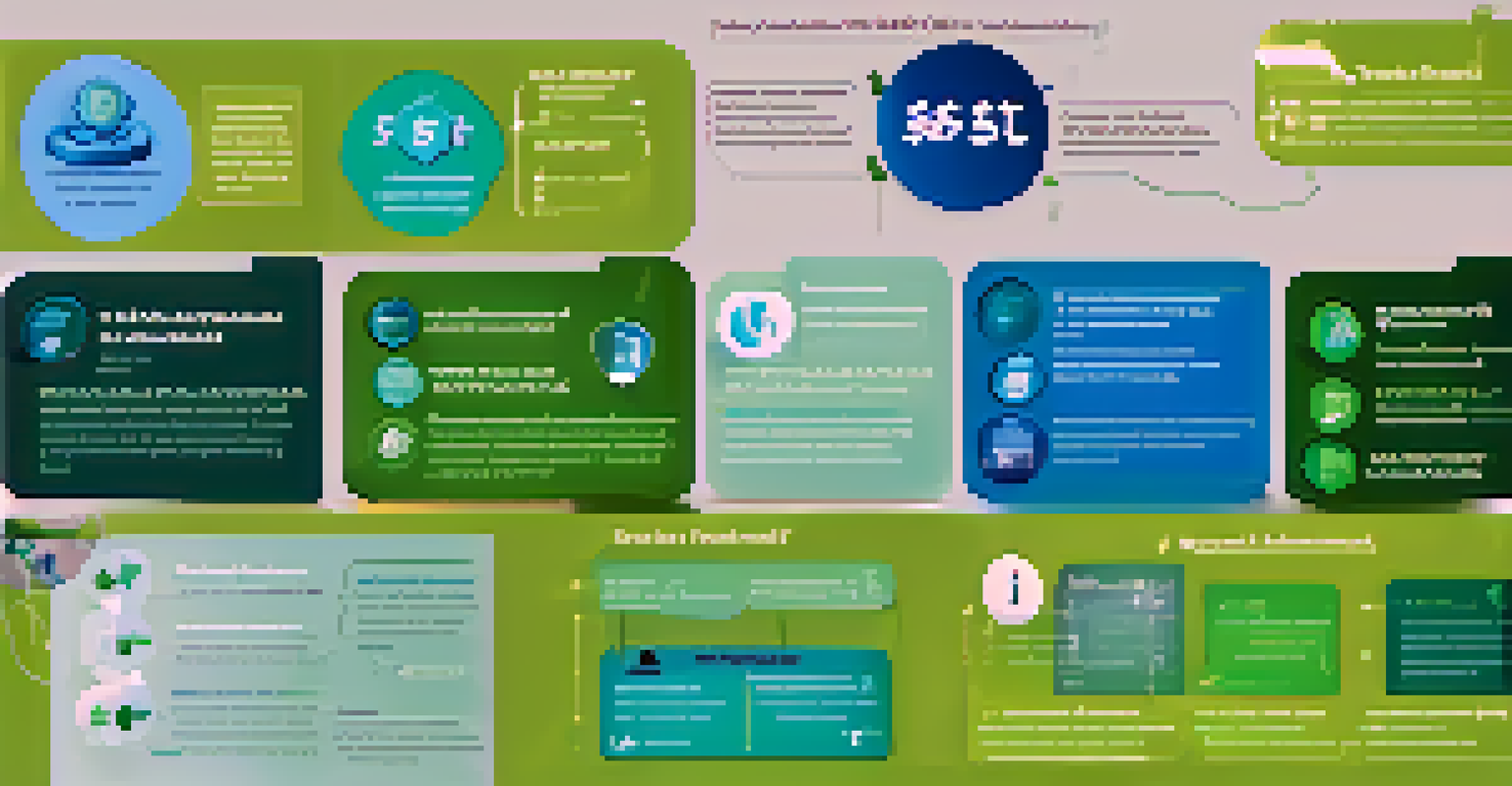Understanding the Economics of Electronic Health Records

The Basics of Electronic Health Records (EHR)
Electronic Health Records (EHR) are digital versions of patients' paper charts. They contain comprehensive patient histories, treatment plans, and medications, making them an essential tool in modern healthcare. By transitioning from paper to digital, healthcare providers can improve the accuracy and accessibility of patient data.
The greatest medicine of all is to teach people how not to need it.
EHR systems allow for real-time updates and easy sharing among authorized providers, enhancing coordination of care. This seamless communication helps in reducing errors and improving patient outcomes. Essentially, EHRs transform how healthcare is delivered, making it more efficient.
However, implementing EHR systems involves significant upfront costs and ongoing maintenance expenses. Understanding these economic factors is crucial for healthcare organizations aiming to optimize their investment in technology.
The Cost Factors of EHR Implementation
The initial costs of EHR implementation can be daunting, often ranging from tens of thousands to millions of dollars. These costs include software purchases, hardware upgrades, and training staff on the new system. For many healthcare providers, these expenses can be a significant barrier to adopting EHRs.

Beyond initial costs, there are ongoing expenses associated with EHR maintenance, updates, and support. Additionally, practices may face costs related to potential workflow disruptions as staff adjust to the new system. Thus, understanding the total cost of ownership is vital for decision-making.
EHRs Enhance Patient Care Efficiency
Electronic Health Records streamline healthcare delivery by improving data accuracy and facilitating real-time communication among providers.
Despite these costs, many providers find that the long-term benefits, such as improved patient care and efficiency, can outweigh initial investments. This balancing act between costs and outcomes is a key consideration in the economics of EHR systems.
Financial Incentives for EHR Adoption
To encourage the adoption of EHR systems, various financial incentives have been introduced. For instance, the Medicare and Medicaid EHR Incentive Programs offer significant payments to eligible healthcare providers who demonstrate meaningful use of EHR technology. These incentives can help offset the initial costs of implementation.
Technology is best when it brings people together.
Additionally, some states and private insurers offer grants or low-interest loans to assist in the transition to EHRs. Such funding opportunities can make a substantial difference, especially for smaller practices that may struggle with upfront costs.
Ultimately, these financial incentives aim to improve healthcare quality and accessibility, making it easier for providers to invest in necessary technology. By navigating these incentives, healthcare providers can enhance their financial viability while improving patient care.
Long-Term Financial Benefits of EHR Systems
While the initial costs of EHR systems can be substantial, the long-term financial benefits can be significant. For example, EHRs can streamline billing processes, reduce claim denials, and enhance revenue cycle management. This efficiency often leads to increased revenue for practices over time.
Moreover, EHRs can help reduce costs associated with paper records, such as storage, printing, and mailing. By digitizing records, practices can cut down on administrative expenses and allocate resources more effectively.
Implementation Costs Are Significant
While EHR systems can lead to long-term benefits, the initial costs for software, hardware, and training can be a major hurdle for many healthcare providers.
In addition, improved patient care through EHRs can lead to better patient retention and satisfaction, which are crucial for long-term financial success. As practices deliver quality care, they’re likely to see a positive impact on their bottom line.
EHR Systems and Regulatory Compliance
Complying with healthcare regulations is a critical aspect of operating a medical practice. EHR systems play a vital role in meeting these regulatory requirements, such as those outlined in the Health Insurance Portability and Accountability Act (HIPAA). By ensuring that patient data is securely stored and shared, EHRs help practices avoid costly penalties.
Moreover, EHRs can assist healthcare providers in meeting quality reporting requirements. Many EHR systems come equipped with tools that streamline data collection, making it easier for practices to report performance metrics and receive reimbursements.
In the long run, maintaining compliance through effective EHR systems not only protects practices financially but also enhances their credibility in the eyes of patients and insurers alike.
Challenges in EHR Adoption and Use
Despite the benefits, many healthcare providers face challenges when adopting EHR systems. Common issues include resistance to change among staff, technical difficulties, and concerns about data security. These challenges can hinder the effective use of EHRs and impact their economic viability.
Additionally, practices may struggle with the integration of EHRs into existing workflows. If not implemented thoughtfully, EHRs can disrupt daily operations, leading to frustration among staff and patients. Addressing these challenges requires careful planning and training.
Financial Incentives Support Adoption
Programs like Medicare and Medicaid offer financial incentives to encourage healthcare providers to adopt EHR systems, helping to offset upfront costs.
To overcome these hurdles, it's essential for practices to have a clear strategy and provide ongoing support for staff. By fostering a culture that embraces technology, healthcare organizations can maximize the potential benefits of EHR systems.
The Future of EHR Economics
As technology continues to evolve, the economics of EHR systems are also changing. Innovations such as artificial intelligence and big data analytics are starting to enhance EHR functionalities, making them more valuable for healthcare providers. These advancements could lead to further cost savings and efficiency improvements.
Moreover, as telemedicine becomes more prevalent, EHR systems are increasingly integrating with remote patient monitoring tools. This integration expands the capabilities of EHRs, allowing for more comprehensive patient care and potentially reducing costs associated with in-person visits.

Looking ahead, the economics of EHR systems will likely continue to evolve as providers seek ways to improve patient outcomes while managing costs. Embracing these changes will be crucial for healthcare organizations aiming to thrive in a competitive environment.